#Lenard Lakofka
Text
138. Lenard Lakofka - L1: The Secret of Bone Hill (1981)

Very much a setting for adventures than a true adventure module, The Secret of Bone Hill basically details the southern part of the island of Lendore, centred around the town of Restenford in the world of Greyhawk. Near this town there's a couple of dangerous places, foremost among them Bone Hill, which has a fortress inhabited by bugbears during the day and undead during the night.
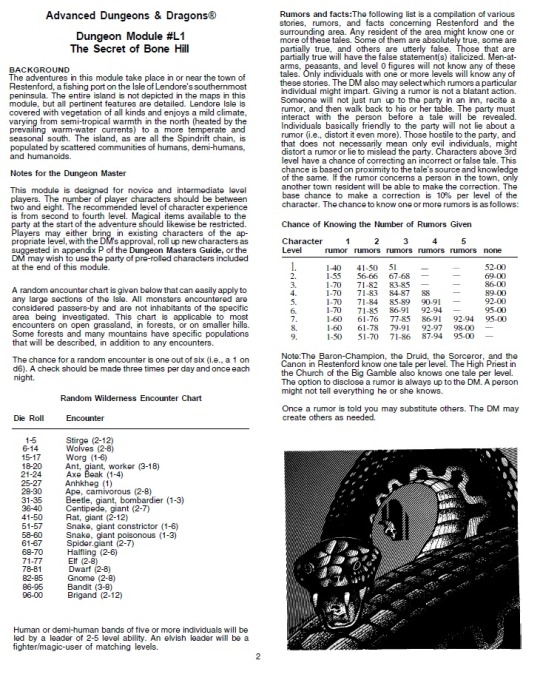
Most of the 30 page module consists of detailed descriptions of these locations and their inhabitants as well as treasures and monsters to be found. What the module does not really have, however, is a plot to go with it. In fact it hints at further developments in L2 and further on, but doesn't really give a clue to the DM as to what they might be. So this module really relies on the DM to make up a story to go along with the detailed setting, but with no inkling as to what will happen in the module series that is a hard task if you want to move on to L2 later on.

Weirdest of all the module includes detailed descriptions of the large Restenford castle while also saying that players have no reason to go in there until at least L2... so the following module. Why is this here then? Shouldn't it be in L2? Maybe Lakofka is just trying to cover all the bases, seeing as even if there is no reason to go in the castle there is the possibility to go into the castle as you are in that town, but surely there are ways to block access until L2. Oh well. A bit of a weird one this module, but at least it introduced the Beholder's nicer cousin, the Spectator to AD&D.
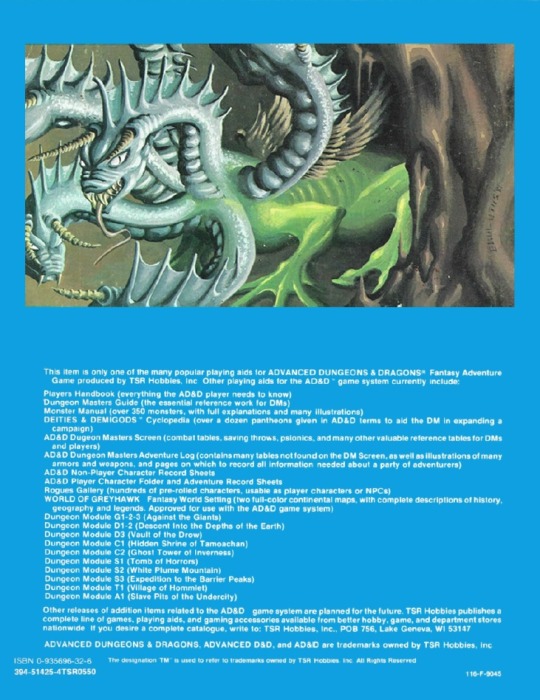
#adnd#dnd#ttrpg#ad&d#d&d#dnd art#dungeons and dragons#dungeons & dragons#Lenard Lakofka#The Secret of Bone Hill#bill willingham
6 notes
·
View notes
Photo
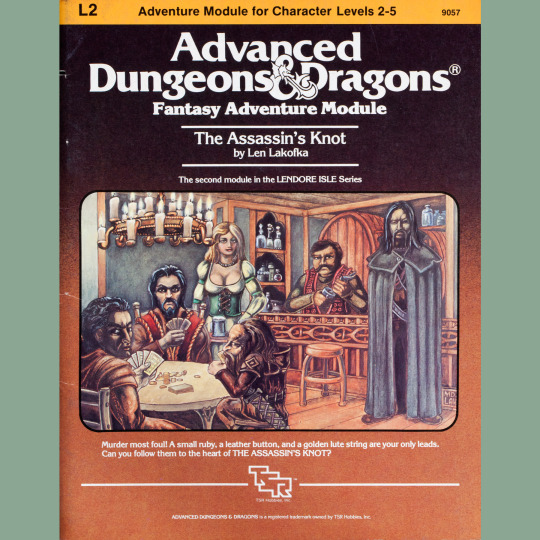
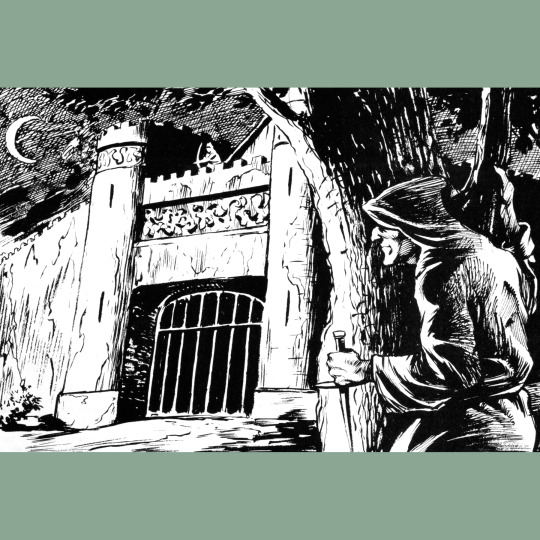

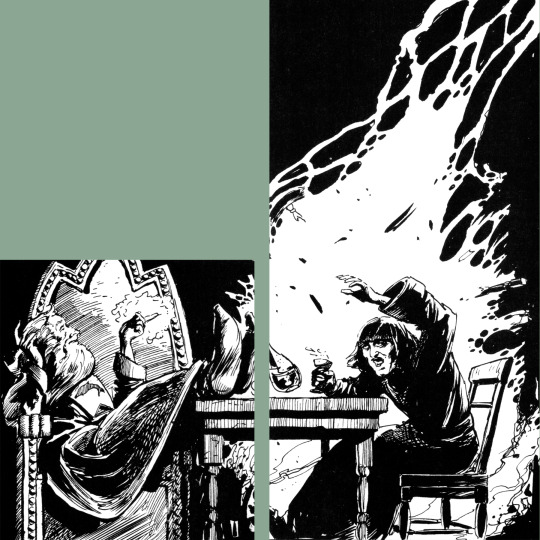
L2 — The Assassin’s Knot is a murder mystery. That was pretty unheard of subject matter back in 1980 when this was originally written. Alas, by 1983, when this finally came out (two years after L1), investigatory scenarios were a bit more common (perhaps in part because of Call of Cthulhu’s effect on the industry). The title implies a dense mystery of tightly wrapped motives obscuring the truth of the crime. Alas, while the title is great, the actual mystery is pedestrian. The idea that the longer it takes the players to solve the murder, the more out of hand events get is pretty great, but the execution never really lives up to the concept.
The best thing I can say about this one is that it reminds me a lot of Warhammer’s Enemy Within campaign, which uses a lot of the same ideas to better, more exciting effect.
Oh, and this is maybe the first D&D module to not have a dungeon of any sort in it, which feels like it should be a cause for celebration, but then it isn’t. There was also supposed to be an L3, which was also written in 1980, but didn’t come out until 1999, as part of the Silver Anniversary Collector’s edition. That published module was based on an unfinished draft. The Lendore Isles just can’t win.
56 notes
·
View notes
Photo
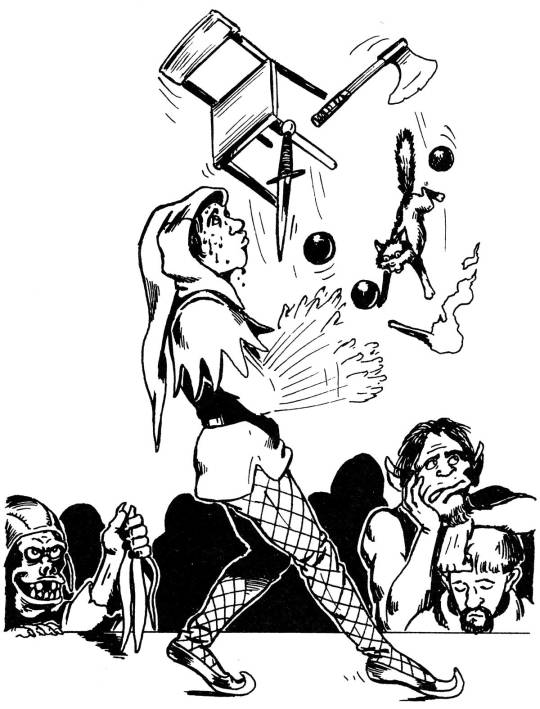
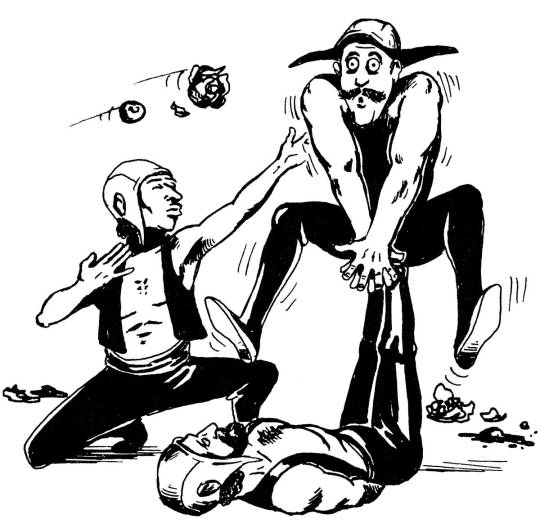

The entertainer class for AD&D has three subclasses -- juggler, acrobat, and troubadour. Each subclass gains multiple special abilities. A juggler can throw a burst of weapons exceeding the normal number per round. An acrobat can jump at will like the spell effect. Leveling up can require months of training and a special performance before a potentially hostile audience, described by several pages of detailed rules. (Jim Holloway from Lenard Lakofka’s article in Dragon 69, January 1983)
#D&D#Dungeons & Dragons#Jim Holloway#Lenard Lakofka#AD&D#dnd#Dragon magazine#entertainer#juggler#acrobat#troubadour#lute#dungeons and dragons#TSR
101 notes
·
View notes
Text
Just learned Lenard Lakofka, arguably the true inventor of the Lich (among other contributions to D&D - spells like "Leomond's Tiny Hut" were invented by his character in early games for instance), has just died. RIP.
5 notes
·
View notes
Photo
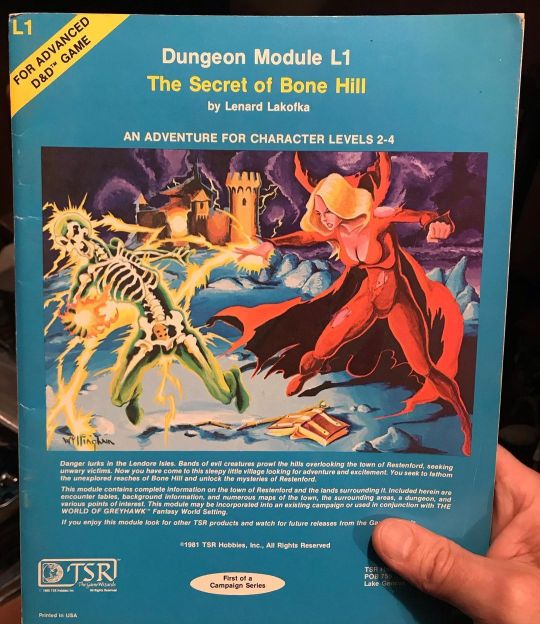
Bone Hill. One of the places I spent the summer of 1983. RIP Lenard Lakofka. #lenardlakofka #lenlakofka https://www.instagram.com/p/CGswLLQB4cu/?igshid=15i2sb15foits
0 notes
Text
313. Various Authors - Dragon #87 (July 1984)

Not the most D&D focused issue of Dragon, with a Top Secret adventure module and some other content covering other TSR games including the Ares section which covers Science Fiction themed games, this still has plenty of content for D&D players.
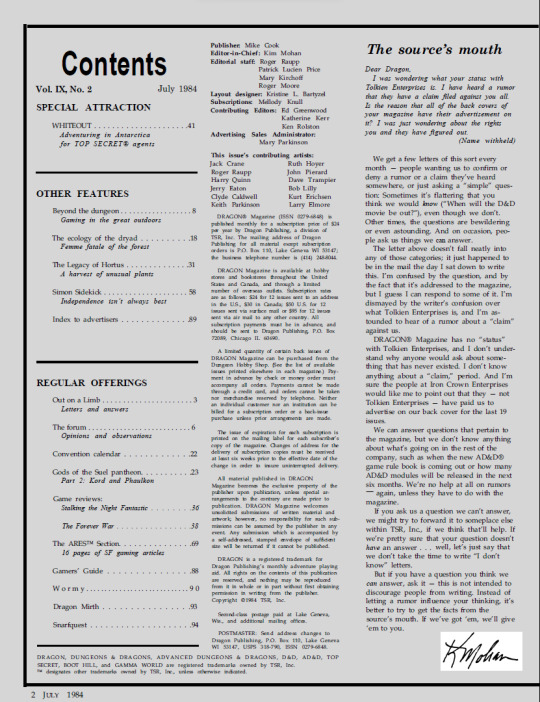
We start off with a very long article about adventuring in the wilderness and how DMs might optimize this type of adventuring. Shaun Wilson brings us the Ecology of the Dryad, and Lenard Lakofka brings us two more Gods of the Suel pantheon for the Greyhawk setting.

Also fun, but not D&D related is Jack Crane’s Legacy of Hortus, which has loads of drawings of animal/plant hybrids. The issue is rounded out by the usual comic strips.
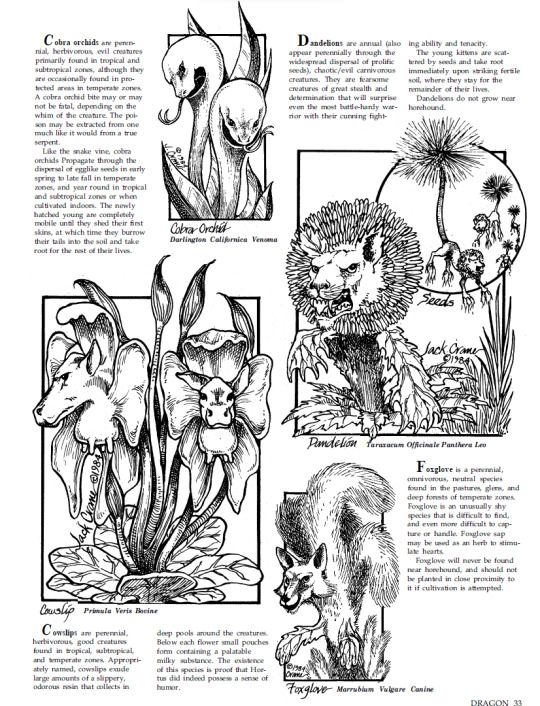
8 notes
·
View notes
Text
91. Various Authors - The Dragon #34 (February 1980)

A longer than usual Dragon magazine, stretching to 73 pages of material, it adds the second adventure module to come out in the magazine, entitled Doomkeep, it's a self-contained adventure for competition purposes at GenCon XII. It was a Masters Tournament, so it involved all the TSR employees and other famous players, Robin Hostetter won the competition with Gygax coming in at number 16... oh well.
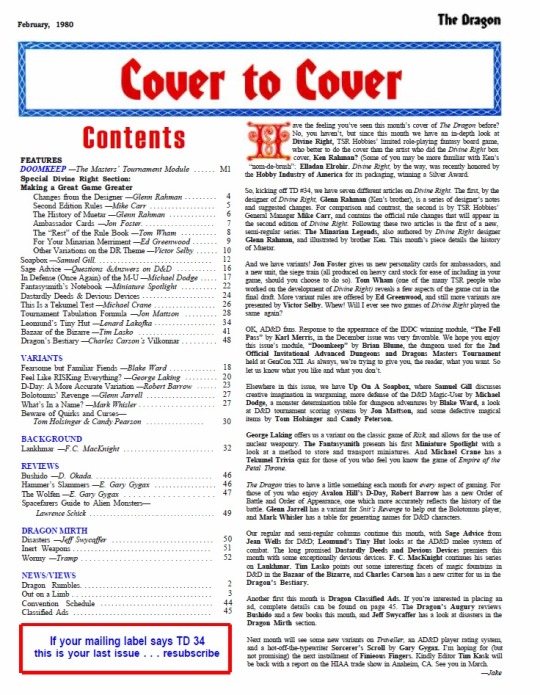
In terms of articles this is not an issue particularly dedicated to AD&D, in fact this is a special issue dedicated to Divine Right, another TSR game. However, as usual you get the customary columns and features on AD&D, like the Bestiary, Sage Advice, Bazaar of the Bizarre as well as an article on a variant turn structure by Lenard Lakofka and another article on cursed and quirky items.
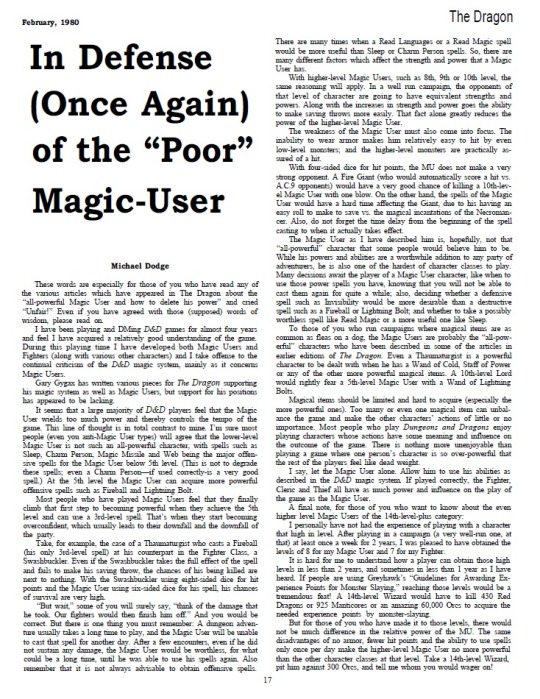
Other than the competitive adventure module at the end of the issue you also get an article about tabulating scores in AD&D games for competitions. Its fascinating to see how much of the game was about competitions in the early years and how much that has kind of fallen by the wayside. In fact the cooperative nature of D&D is much more a feature of the game than seeing it as a competitive sport, however people did "win at Dungeons and Dragons" back in the day. However there are so many articles about how to score the game and how many problems arise from it that it was pretty clear that this wasn't a naturally competitive game.
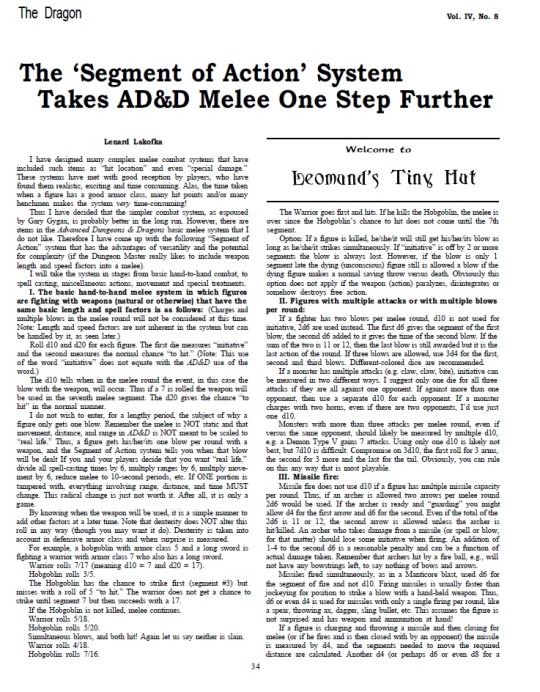
5 notes
·
View notes
Text
87. Various Authors - The Dragon #33 (January 1980)

Welcome to the 80s! And the first thing we see from D&D in 1980 is the January issue of Dragon Magazine with a really cool cover, one of my favourites up until now, with that dragon just lounging on a bunch of skulls, like a lounge lizard, but bigger.

Also near the beginning of the magazine in the reader's mail section (Out on a Limb) we get a color picture of Gygax, which readers really wanted to see with him having by now become a near mythical character in the TTRPG milieu. We have an interesting article by H.R. Lovins on having your NPCs have a CAU (caution) score, this is basically a scale that goes from friendly to hostile as to how they regard PCs at first glance, this is pretty much something that is already done without really needing to make it a "score", but it's a cool idea nonetheless... and many years later would be a thing on PC Games from Dragon Age to The Sims.
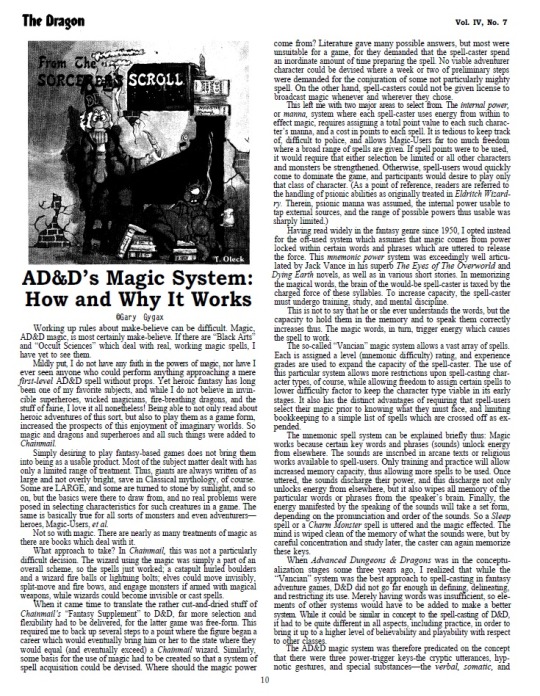
According to the editorial Gygax is now a very busy man, so the present Sorcerer's Scroll will be his last article for the magazine for a while, and he dedicates this space to again explaining AD&Ds Magic System as well as what inspired it and why it is why it is instead of another system (such as Spell Points). Leomund's Tiny Hut brings us some homebrewed changes to spells, completely unofficial suggestions by Lenard Lakofka and a large part of the issue is taken up with the DM listings for 1980. A new column shows up, The Electric Eye, covering innovations in PC Gaming, which in 1980 means fantasy text games on the Apple II (they don't mention it, but the Zork series had started coming out in 1977 and was exactly that).
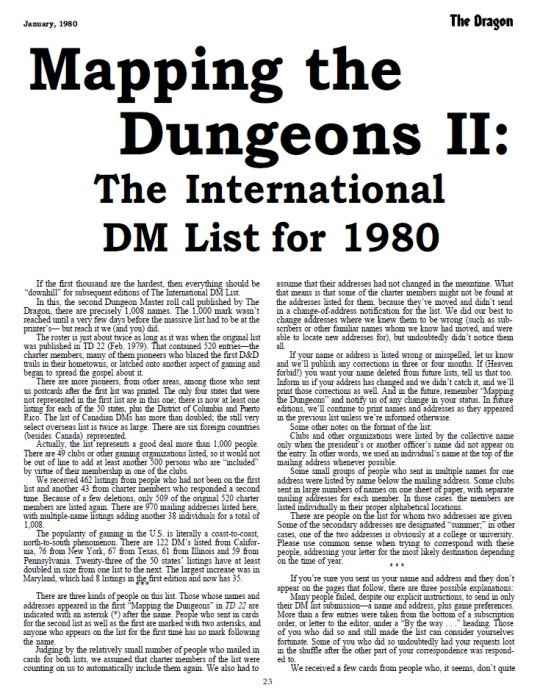
It is pitch black. You are likely to be eaten by a grue.
1 note
·
View note
Photo
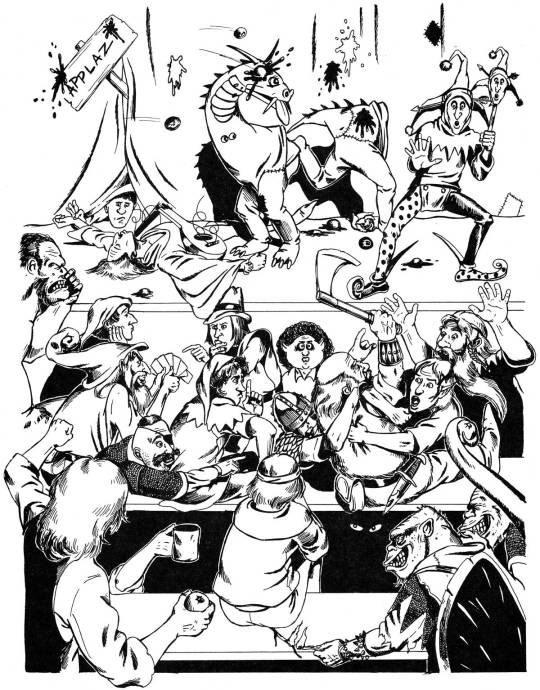
Lenard Lakofka introduced the entertainer character class in Dragon 69, January 1983; Jim Holloway put us in the audience
#D&D#Dungeons & Dragons#Jim Holloway#Lenard Lakofka#Dragon magazine#AD&D#entertainer#dnd#gaming humor#dungeons and dragons#TSR#jester#performer#NPCs
58 notes
·
View notes
Photo
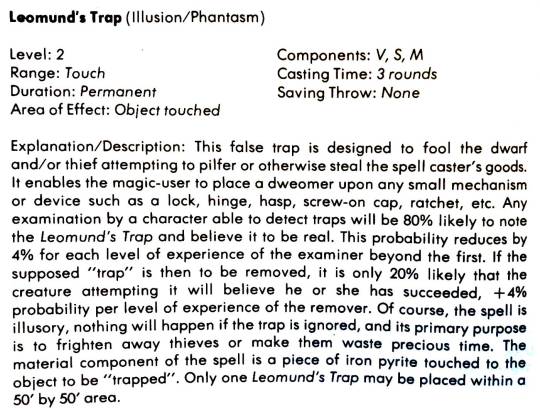
Leomund’s Trap, 2nd level magic-user spell, from the 1e AD&D Player’s Handbook by Gary Gygax. Another spell originally created by Lenard Lakofka for his Greyhawk campaign character Leomund, this one appeared through the 3.5e rulebook but went missing from 4e and 5e. The first line refers to AD&D’s rule allowing a 50% chance for any dwarf PC to “detect traps involving pits, falling blocks and other stonework” when actively searching due to their typical background in mining.
#D&D#Dungeons & Dragons#AD&D#Leomund's Trap#Lenard Lakofka#Len Lakofka#Leomund#Gary Gygax#Players Handbook#dnd#Dungeons and Dragons#TSR#magic spell#magic user#wizard#wizard spell#magic#text
66 notes
·
View notes
Photo
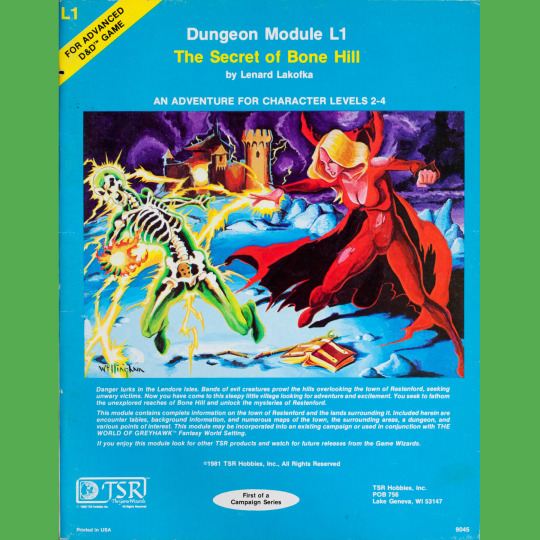


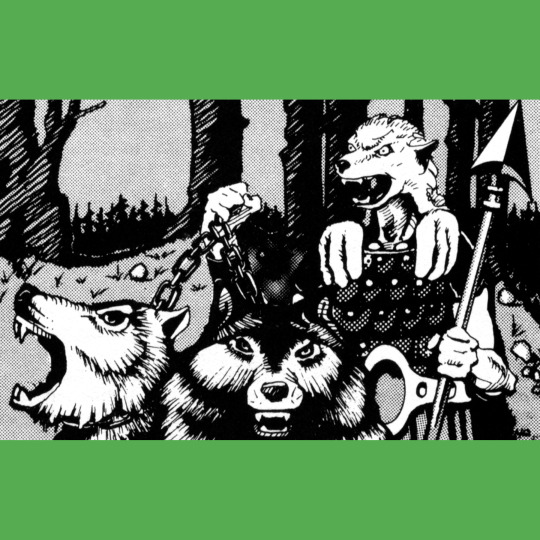
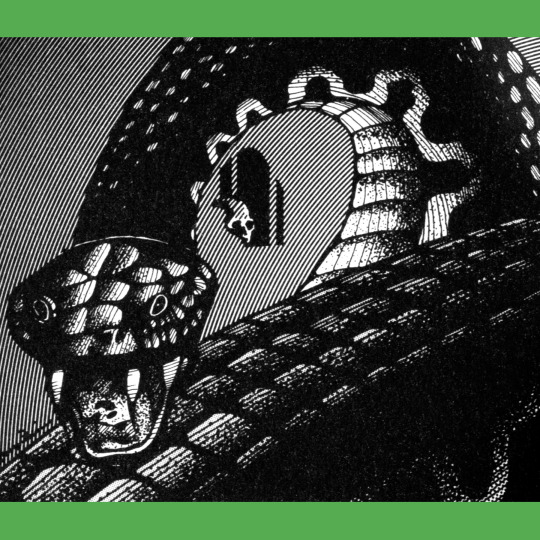
The L-series modules are curious. They’re written by Lenard Lakofka, adapted from adventures from his own Lendore Isles, which Gary Gygax included in the World of Greyhawk folio (1980), presumably for the express purpose of Lakofka writing scenarios set there. The first one, L1 — The Secret of Bone Hill, came out in 1981 and was pretty unusual, focusing on a town and a wilderness to explore rather than a central dungeon crawl. The wilderness was new territory in 1981, with Isle of Dread and the Expert Box only recently establishing the possibility of that sort of adventure. Not a whole lot of town-based adventuring at this point in TSR stuff outside of the Village of Hommlet (1979), though Judges Guild had several examples by now.
The result is kind of all over the place. The Bone Hill dungeon is perfectly fine. The wilderness seems overstuffed. The town is a bit of both, though having several small dungeons in the town is a nice touch.
Great Willingham cover. The back cover illustration, by Erol Otus, is a weirdly cropped mess though — Lawrence Schick, in Heroic Worlds, says this was on purpose, because Otus didn’t like the adventure. I’m kind of with Erol on this one.
The front cover also declares L1 “First of a Campaign Series.” While not quite so bad as the Volume I curse, it is still a bad omen.
152 notes
·
View notes
Photo

Spectator, a Lawful-Neutral beholderkin summoned from the plane of Nirvana to guard a treasure for 101 years (Erol Otus, AD&D module L1: The Secret of Bone Hill by Lenard Lakofka, TSR, 1981)
#D&D#Dungeons & Dragons#Erol Otus#beholderkin#beholder#spectator#The Secret of Bone Hill#AD&D#dnd#Dungeons and Dragons#TSR#monster
175 notes
·
View notes